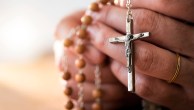Media Coverage of the Clergy Abuse Scandal
Newspaper coverage of the Catholic clergy sexual abuse scandal grew more intense this spring than at any time since 2002, and European newspapers devoted even more ink to the story than American papers did, according to a new study by the Pew Research Center.
The heavy coverage in Europe was a reversal of the pattern in 2002, when a Boston Globe series triggered an avalanche of reporting on sexual abuse by priests in the United States but relatively few stories appeared in the European press. In early 2010, by contrast, much of the reporting focused on sexual abuse of children in Europe, and English-language European newspapers published three times as many articles on the scandal as U.S. papers did, the new study finds.
In addition, the media scrutiny this year zeroed in on the pope himself. During the six-week period from March 12 through April 27, Pope Benedict XVI was a major focus of more than half the stories on the scandal in the mainstream U.S. media, including print, radio, network television, cable TV and online news sources.
These are among the key findings of the study, conducted jointly by the Project for Excellence in Journalism and the Pew Forum on Religion & Public Life, both of which belong to the nonprofit, nonpartisan Pew Research Center in Washington, D.C.
The amount of coverage devoted to the pope may not be unusual, given his role in the church and the media’s tendency to focus coverage of scandals on individuals rather than institutions. But the thrust of the recent coverage – dwelling particularly on allegations that the pope abetted the cover-up of abusive priests in his native Germany and elsewhere – has been toxic for Benedict’s image.
In a nationwide poll released by the Pew Research Center in April, for example, just 12% of the public said the pope has done a good or excellent job addressing the scandal, down from 39% two years earlier. About seven-in-ten Americans (71%) said Benedict has done a poor or only fair job, up from about half (48%) who felt that way in 2008.
The new Pew Research Center study examined coverage of the scandal in 52 mainstream U.S. news outlets: 11 newspapers, 12 news websites, seven network TV programs, 15 cable TV programs and seven radio programs and news updates. In addition, the study looked at blogs and social media, relying in part on data from Tweetmeme, a Twitter monitoring service. A Nexis search of English-language newspapers around the world from 2002 through 2010 was used for historical comparisons. Stories from three Catholic news organizations were analyzed separately, as were religion blogs carried by major U.S. newspapers. Among the findings of the study:
- From mid-March (when the pope’s role in a decades-old abuse case in Germany came under scrutiny) through late April, clergy sexual abuse was the eighth biggest story in the mainstream media, beating out coverage of nuclear weapons policy and the Tea Party movement. The biggest week of coverage was March 22-28, when news organizations reported on the failure of Vatican officials years ago, including the future pope, to defrock an American priest who had abused nearly 200 deaf boys. The church scandal was the fourth biggest topic in the mainstream news that week.
- Benedict was by far the biggest newsmaker, featured in 51.6% of the stories about the scandal in the mainstream media during the six-week period studied. All other individual figures combined, including cardinals, bishops and priests, appeared as lead newsmakers in just 12% of the stories.
- The level of coverage this year came very close to that of 2002, when the news erupted that Cardinal Bernard Law of Boston and other bishops across the United States had shuffled accused abusers from parish to parish without informing the police or public. A Nexis keyword search of 90 media outlets found 1,559 stories mentioning the scandal in the first four months of 2010, just 77 fewer articles than in a similar four-month period in mid-2002 (May 1-Aug. 31). No other developments in the scandal during the intervening eight years even came close to generating that level of coverage.
- An examination of three Catholic news outlets reveals wide differences in their approaches. The National Catholic Reporter, an independent weekly, devoted fully two-thirds (66.7%) of its Vatican coverage to the scandal. Two Catholic news services, on the other hand, devoted considerably less of their Vatican coverage to the story. Catholic News Service gave it 44.8%, and the Catholic News Agency gave it 33.3%.
- The scandal found little traction in new media, however. Across the millions of blogs and Twitter posts tracked in PEJ’s weekly monitoring, the clergy abuse scandal registered as a leading topic in only one of the six weeks analyzed. During the week of March 29-April 2, when new information emerged about the Milwaukee archdiocese’s handling of an abusive priest, the scandal was the second-largest story, making up 9% of all Twitter links to news reports. But it did not rank in the top five most blogged-about news stories at all.
- Among the religion blogs published by high-circulation U.S. newspapers, those operated by USA Today and The Washington Post contained the most entries on the clergy abuse scandal – a total of 12 each during the six weeks studied.




